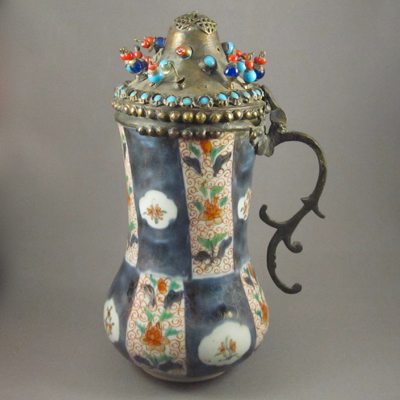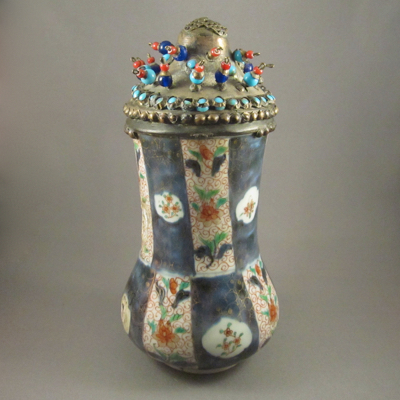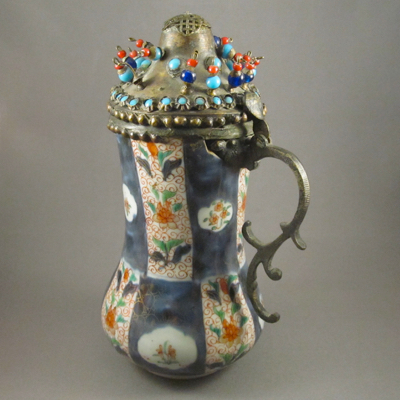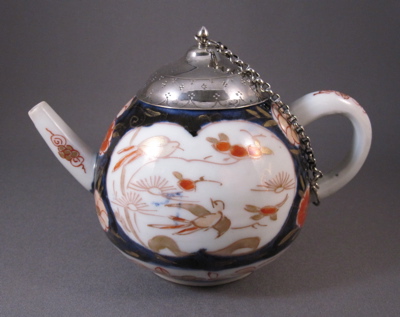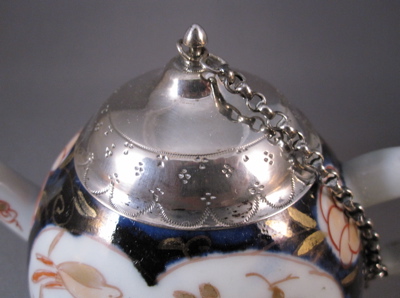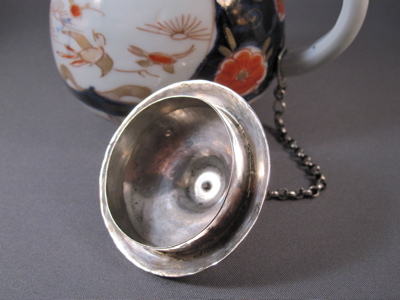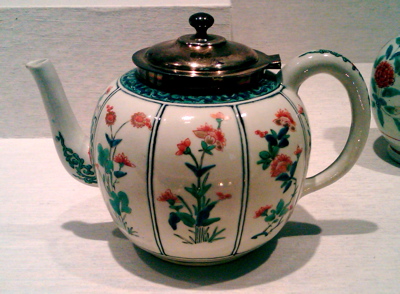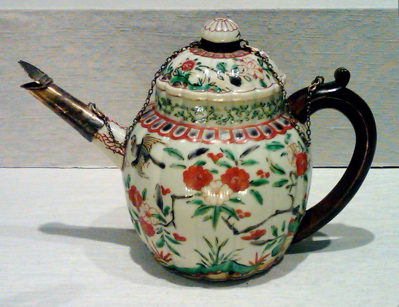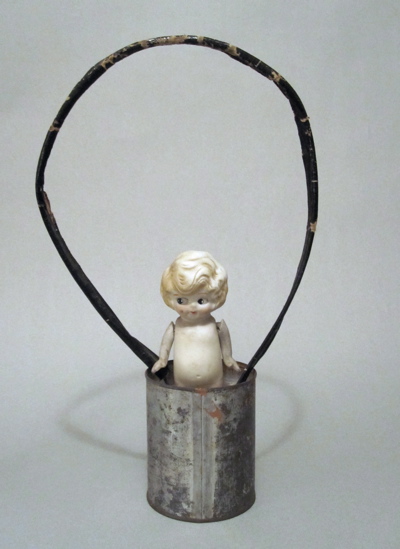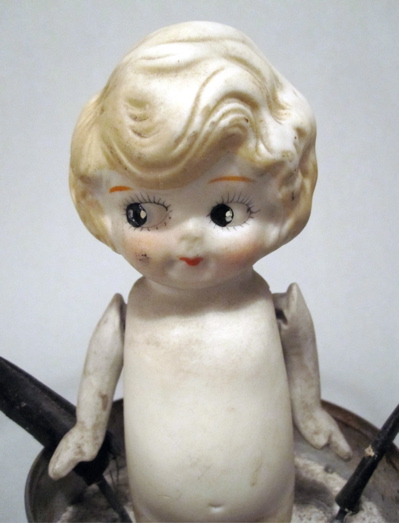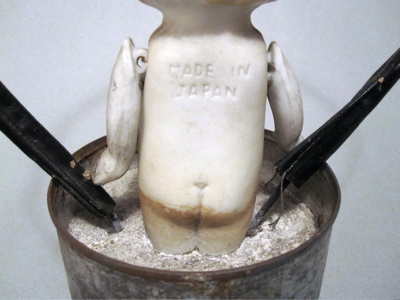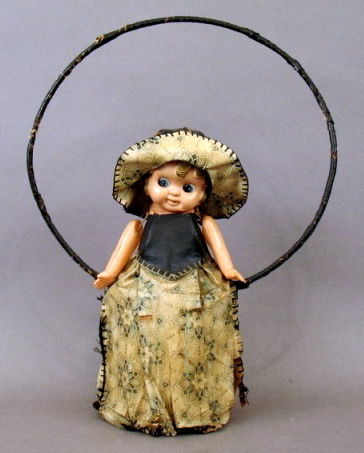This unusual Japanese porcelain vessel has been a mystery to me ever since I purchased it in London in 2014. The dealer I bought it from knew little about it, so I have been researching it for the past few years. It stands 8.75 inches high and is decorated in the Imari style and color palette, including cobalt blue, iron red, green, and gilt accents. I asked some experts to weigh in on its function and age and their responses range from it being a shaving mug, an incense burner, to a tumba for drinking fermented millet. Most agree it was made during the Edo period (1603–1867).
The original lid and handle broke over 125 years ago and were replaced in Tibet (others suggest Turkey and Persia) with an ornate replacement adorned with turquoise, coral and blue glass beads. If anyone can shed more light on this mystery vessel, especially when it was made and its original use, I would greatly appreciate it.
